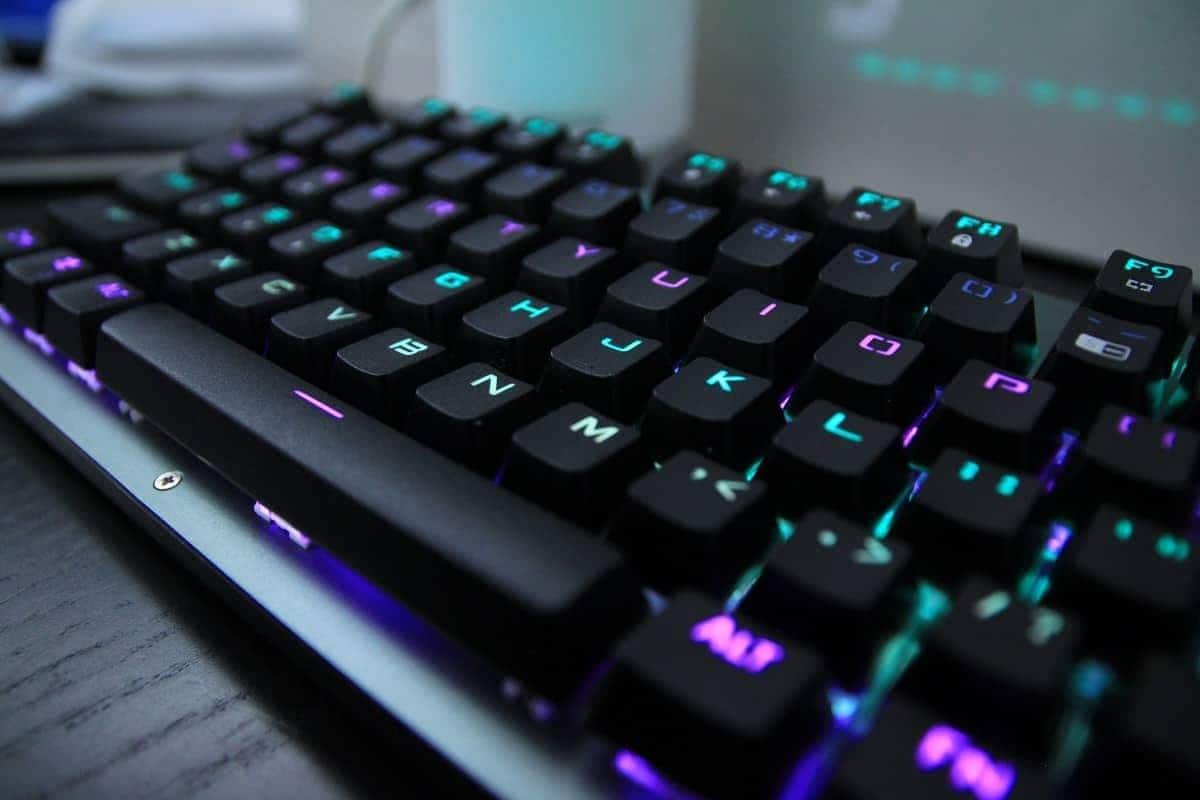
While not immediately one of the first things one may consider when gaming on PC, the right keyboard is a crucial part of a gamer’s arsenal. Having the right QWERTY companion can be hugely beneficial to your success as a PC gamer. Coming well-armed with the right external components is vital to winning the battle.
Rubber Dome vs Membrane Keyboards: What’s the Difference?
The terms “rubber dome” and “membrane” may seem somewhat obtuse and esoteric at first, but their meanings are quite simple. They refer to two different ways in which the keys of a keyboard interact with the same switching mechanism.
The choice of switch mechanism is essential when it comes to deciding on a keyboard, as it determines both key response and pre-travel. The two terms have become somewhat synonymous with one another as most keyboards commonly use both technologies.
You may be intimidated by the number of terms that may be unfamiliar to you, but do not worry. Understanding what those terms mean is simple but essential. You want to make sure that you are making the right choice.
Membrane Keyboards
Membrane keyboards (unsurprisingly) make use of membrane switch technology in their composition. Rather than having them as separate moving parts, their keys are pressure pads, printed on a flat and flexible surface.
There is very little - if any - tactile feedback in these keyboards due to their compact, simple design. Because of this, their popularity and use have declined substantially over the years.
Rubber Dome Keyboards
Rubber dome keyboards are a specific modification of a standard membrane keyboard. They employ the same switching technology, which makes use of a thin layer of silicone that acts as both the electrical contact point and the spring.
The difference between rubber dome and standard membrane keyboards is that the latter lacks any significant tactile response. The rubber fitting over the membrane also provides more precise key actuation.
The Choice: Which One Do I Use?
Your choice of keyboard-type can influence your performance. Still, it is important to remember that it is a personal one, and is thus up to your preference. That being said, there are some general, objective factors to keep in mind when picking out your QWERTY companion.
Membrane
These were a common choice among PC users for a long time before more progressive types supplanted them. Membrane keyboards use a single sheet of rubber or silicone in their design, separated into pressure-sensitive zones. The different symbols and the outlining around these zones are what simulate the keys.
Unlike mechanical keyboards whose electrical currents are only triggered by deliberate key presses, membrane keyboards have currents that are always dormant. Pressing the key completes the current.
Because of their simple design and material-easy composition, membrane keyboards are quick and inexpensive to manufacture and can be sold cheaply. They are also more resilient against dirt and liquids compared to other keyboards.
However, membrane keyboards have a minimal to non-existent tactile response. They are generally considered to be unresponsive, and error-free blind typing is a challenge. Most people find typing with these keyboards difficult, especially in large passages or quick sequences.
When it comes to gaming, these issues can be very damaging to your playing performance. The inconsistent responsiveness of the key presses can be frustrating, and the near non-existent tactile feedback can throw you off. Suffice it to say these devices provide little in the way of tactical edge.
Still, the membrane keyboard is enduring, especially considering that a lot of modern keyboards (including dedicated gaming keyboards) make use of its basic design.
Pros
- Inexpensive for most people
- More resistant to weathering than other keyboards
Cons
- Inconsistent functionality and responsiveness
- Non-tactile feedback
Rubber Dome
Rubber dome keyboards make use of the same switching technology as membrane keyboards. The same basic design applies as well: a single layer of silicone or rubber is separated into different zones of pressure sensitivity.
However, most membrane keyboards nowadays are fitted with a rubber dome, which provides an essential physical interface between the user and the device. This interface allows for more distinct key presses, and a significant improvement in responsiveness, leading to better, more consistent functionality.
The rubber doming separates each key distinctly, functioning as a return spring as well. There is a definite increase in tactile feedback.
These have become the stock-standard keyboard for everyday use, for both desktop computers and even smaller machines like laptops. They are reliable and sturdy, making them great for any user.
For gamers, the tactile feedback of the rubber dome is a significant improvement over that of the standard membrane keyboard. While still not as suitable for gaming as a mechanical keyboard (which can be quite expensive), their reliability and ease-of-use always make them a great choice.
Pros
- Greater tactile response
- Consistent functionality
- Ease-of-use
Cons
- Top-of-the-line devices can be expensive
- Still not as ideal as mechanical keyboards
Other Things to Consider
Now that you know the difference between these two types of keyboards, it is time to look at a few other factors which may influence your gaming performance. A lot of these will come down to personal preference and comfort.
Size
The size of a keyboard mostly determines how many keys are on it. Larger keyboards typically possess more keys and vice versa. Standard keyboards also usually come with a dedicated number-pad. If you feel you can live without that, you can try a smaller keyboard.
Customization
With most membrane and rubber dome keyboards, customization is limited beyond a few visual enhancements, though there are a few exceptions. If you want to be able to alter the sensitivity of a key, you may need a mechanical keyboard. If you are willing to spend a bit more money, you may be able to find a more customizable rubber dome keyboard.
Key Rollover
Key rollover refers to a keyboard’s ability to handle multiple key presses at once or in quick succession. The importance of key rollover is somewhat diminished in everyday use. Gaming, however, can be demanding, and it is crucial to choose a device that can perform well under extreme circumstances.
Conclusion
It is important to remember that your choice of keyboard is a personal one. You will always have your preferences. All you can do is make sure that you have all the right information to make the right choice.
Happy gaming!
